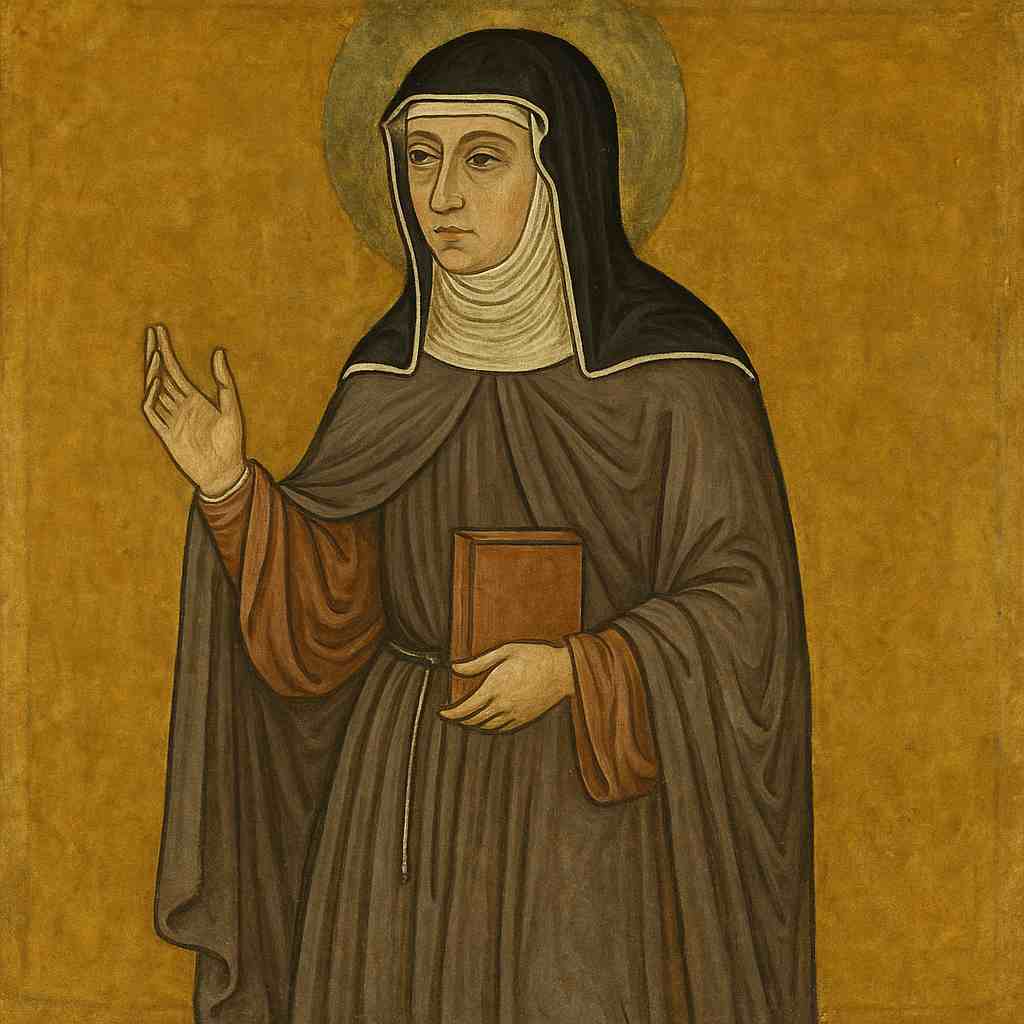1 Poems by Hildegard of Bingen
1098 - 1179
Hildegard of Bingen Biography
Hildegard of Bingen, a twelfth-century mystic, abbess, composer, and poet, stands as one of the most extraordinary figures in medieval history, her life and works a testament to the interplay of spirituality, creativity, and intellectual pursuit. Born in 1098 in Bermersheim, in the German region of the Rhineland, Hildegard was the tenth child of noble parents. As was customary for a tithe child—a symbolic offering to the Church—she was dedicated to religious life from an early age. This decision, which would profoundly shape her future, led to her extraordinary emergence as a visionary whose influence extended far beyond the cloister walls.
Hildegard’s early years were marked by a fragile constitution and mystical experiences. At the age of eight, she was entrusted to Jutta von Sponheim, an anchoress at the Benedictine monastery of Disibodenberg. Jutta became Hildegard’s spiritual guide, providing her with rudimentary education and exposing her to the rigors of monastic life. During these formative years, Hildegard began to experience visions that she later described as a "shade of the living light," encounters with divine radiance that would inform much of her later theological and poetic works. Though initially reluctant to share these experiences, fearing skepticism or condemnation, she eventually embraced them as central to her vocation.
Upon Jutta’s death in 1136, Hildegard succeeded her as the magistra of the small community of nuns at Disibodenberg. Her leadership marked the beginning of her assertive and ambitious path. Around 1141, Hildegard received what she described as a divine command to record her visions. The task was daunting, not only for its spiritual implications but also for the challenges it posed to a woman in medieval Christendom. Nevertheless, with the support of her confessor, the monk Volmar, and her close confidante, the nun Richardis von Stade, she began writing what would become Scivias (Know the Ways of the Lord), a monumental work combining theology, visionary imagery, and poetry. Approved by Pope Eugenius III, Scivias established Hildegard’s reputation as a legitimate visionary and opened the door for her unprecedented engagement with the wider ecclesiastical and intellectual world.
Hildegard’s poetic voice was inextricably linked to her mystical experiences. Her visions often presented themselves as vivid, symbolic tableaux, replete with luminous figures, intricate geometries, and powerful natural imagery. These visions formed the backbone of her writings, which blended poetry, prose, and elaborate illuminations to convey their divine origins. In her poetic texts, which were frequently set to music, she employed a distinctive Latin style characterized by vivid imagery, syntactical complexity, and a deeply spiritual tone. Her linguistic creativity extended to the invention of the Lingua Ignota ("Unknown Language"), a mystical lexicon intended to express the ineffable aspects of divine mystery.
In addition to her literary output, Hildegard was an accomplished composer, creating an extensive body of sacred music. Her compositions, collected in the Symphonia armoniae celestium revelationum (Symphony of the Harmony of Celestial Revelations), are remarkable for their soaring melodies and innovative structures. These pieces, written for her community of nuns, reflect a deep connection between her spiritual and artistic sensibilities. Hildegard saw music as a form of divine praise, a means of bridging the earthly and the celestial. Her chants, which often accompanied her poetic texts, are characterized by their expansive melodic ranges and intricate modal patterns, embodying the mystical transcendence central to her worldview.
Hildegard’s work also reflected her profound engagement with the natural world. She composed treatises on medicine, botany, and natural science, demonstrating a holistic understanding of the interconnectedness of creation. These texts, such as Physica and Causae et Curae, combined empirical observation with theological reflection, presenting the natural world as a manifestation of divine wisdom. This integration of scientific inquiry and spirituality was emblematic of Hildegard’s intellectual synthesis, bridging the domains of faith, reason, and artistry.
Despite her cloistered life, Hildegard engaged dynamically with the broader ecclesiastical and political world. She corresponded with emperors, popes, and abbots, offering counsel that was often unflinching in its moral clarity. Her letters reveal a formidable personality, unafraid to challenge authority or speak out against corruption. In the 1160s, she undertook preaching tours across the Rhineland—a highly unusual activity for a woman in her time—delivering public sermons that exhorted clergy and laity alike to reform their lives and return to the principles of Christian faith.
Hildegard’s theology was deeply rooted in her understanding of cosmic harmony and the interrelation of all creation. Her visions emphasized the divine order of the universe, which she often depicted in symbolic terms, such as the "wheel of life" or the "living light." This emphasis on harmony extended to her conception of the human being as a microcosm of the divine order, embodying physical, spiritual, and moral dimensions. Her poetic works frequently explored themes of light, renewal, and the feminine aspects of divinity, particularly through her depictions of Sophia, the personification of divine wisdom.
A key aspect of Hildegard’s legacy lies in her role as a pioneer for women in a male-dominated religious and intellectual milieu. By asserting the legitimacy of her visions and her right to interpret them, she carved out a space for female agency within the Church. Her writings celebrate the feminine as integral to divine creation, often portraying the Virgin Mary as a central figure of spiritual power and intercession. Moreover, her leadership of two monastic communities—first at Disibodenberg and later at the monastery she founded at Rupertsberg—demonstrated her capacity to navigate and transcend the constraints imposed on women of her time.
Hildegard lived to the remarkable age of 81, passing away in 1179. By the time of her death, she had firmly established herself as a multifaceted figure: a poet, composer, theologian, scientist, and reformer. Her canonization process began shortly after her death, though it was not completed until Pope Benedict XVI proclaimed her a Doctor of the Church in 2012, recognizing her as one of the most significant and influential figures in Christian history.
The legacy of Hildegard of Bingen continues to resonate in modern times. Her writings, music, and visionary art have inspired scholars, artists, and spiritual seekers alike. Her holistic vision of the universe, which integrates spirituality, science, and art, offers a compelling model of creative and intellectual engagement. As a poet, her work stands out for its profound lyricism and its capacity to articulate the ineffable, capturing the mystery of divine experience in a voice that remains as luminous and vital as the "living light" that inspired her.
This text was generated by AI and is for reference only. Learn more
Username Information
No username is open
Unique usernames are free to use, but donations are always appreciated.
Quick Links
© 2024-2025 R.I.Chalmers (V2Melody).

All music on this site by R.I.Chalmers (V2Melody) is licensed under a Creative Commons Attribution-NonCommercial 4.0 International License.
Attribution Requirement:
When using this music, you must give appropriate credit by including the following statement (or equivalent) wherever the music is used or credited:
"Music by R.I.Chalmers (V2Melody) – https://v2melody.com"
Support My Work:
If you enjoy this music and would like to support future creations, donations are always welcome but never required.
Donate


